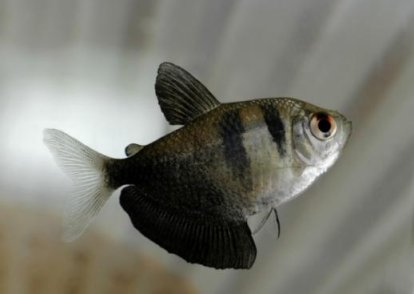On Monday, I wrote about five fishes that are not for beginners, but are commonly sold to beginners. Today, let’s look at the other side of the coin. What fishes are good fish for beginners?
Before we answer that, let’s lay a little groundwork first.
+ This is very subjective and includes some of my personal bias.
+ This is assuming hard water.
+ This includes ease of obtaining the fish in question.
No fish requires zero maintenance, just like no dog requires zero food. But, the fishes here will make good pets for kids, and for adults who want to minimize the workload.
Guppy
The guppy is a perennial favorite with kids and adults alike. They are active, come in a variety of colors, and are relatively inexpensive. (This excludes competition show guppies, which are gorgeous, but can go for $50 a pair or higher. There is a very active and serious guppy subculture.)
The main caveat on the guppy is that if you want low maintenance, get males only. If you mix females and males, you will soon have hundreds of guppies. If you get only females, chances are good she was impregnated at the store, and guppies can store sperm for upwards of 6 months and drop fry at any time.
Black Skirt Tetras
In general, tetras prefer softer water, but the black skirt is extremely tolerant of a wide range of hardness and pH. They have beautiful, long, flowing fins and are fun to watch in the tank because they are a schooling fish.
Because they school, they need to be kept in groups of six or more. The caveat for this fish is that tetras tend to nip fins, so you wouldn’t want them sharing a tank with, say, a male betta.

Betta
Speaking of the betta, this is another good fish for beginners. Please see my recent article on betta housing.
The betta is an ideal fish for somebody who wants a fish, but wants the setup small. They need to be kept in isolation, particularly the males, because males will fight to the death.
The small tank means water changes are a snap. Bettas like the water warmer than most tropical fishes. They need to be around 80 degrees Fahrenheit (25 C).
Caveat here: bettas are stagnant water fishes, so they don’t handle current well. That means that any filtration has to be slow, like from a sponge or box filter. Failing that, frequent partial water changes.
People tend to over-feed bettas. They can live off a very small portion of food.

Zebra Danios
These fish prefer the water a bit cooler than most tropical fish, and because they are extremely active, they require twice the tank size than other fish their size. They like to swim and swim fast.

Siamese Algae Eater
This is a great fish that needs some room. Adults can be four or five inches long, and they do best when kept in teams. They like plants and rocks both to use as hiding places and surfaces to just “hang out.” They have a decent lifespan of five or more years, and are decent algae eaters to boot.
The caveat for this fish is correctly identifying it, as there are a few species that look nearly identical. The true Siamese Algae Eater has a black stripe that extends through the caudal fin. The flying fox, its chief imitator, has a black stripe that ends before the caudal fin starts.

No matter what fish is selected, doing your homework before going to the fish store is the best bet. Impulse buying is dangerous when you don’t know how to take care of that new fish.




